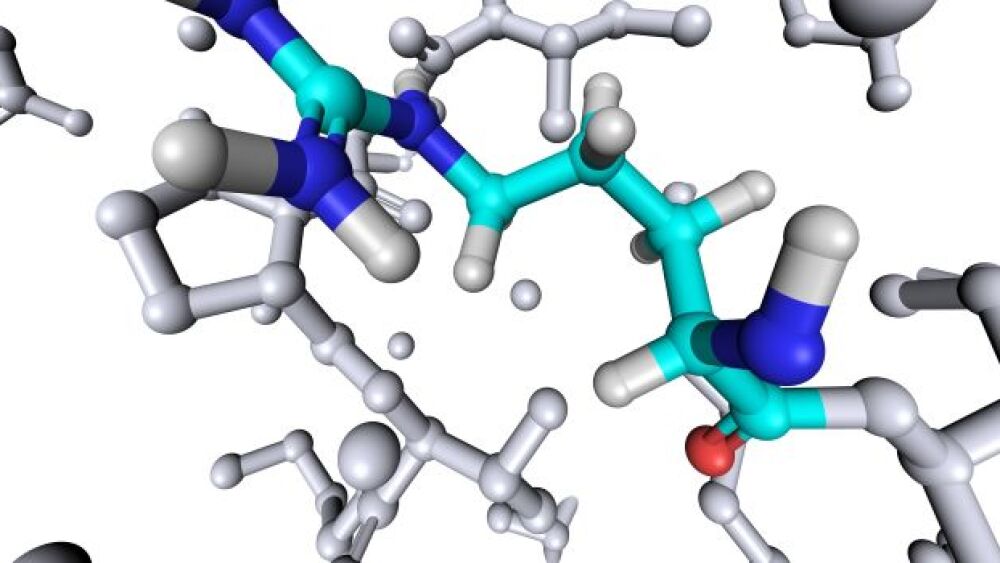Recent work by the PolyPeptide Group, a Swiss contract manufacturing organization (CMO), shows that green chemistry is not only feasible, but also is economically sound.
Despite the acknowledged need for sustainable development throughout the scientific community, green chemistry remains more of an aspiration than an accomplishment. Yet, recent work by the PolyPeptide Group, a Swiss contract manufacturing organization (CMO), shows that green chemistry is not only feasible, but also is economically sound.
“Chemistry has to be transformed to a science and industry of reuse…but finding solutions not involving a significant green premium has been challenging,” said Jan Pawlas, Ph.D., scientist in global development at the PolyPeptide Group.
During his presentation at TIDES Digital Week in mid-May, he showed how reusable feedstocks could replace traditional feedstocks to reduce costs, as well as environmental impact.
Through a concerted greening effort, the PolyPeptide Group reduced DMF consumption by 250 cubic meters in 2020 and aims for a 30% reduction in 2022, he noted. Additionally, its Ambernath, India site has become a “zero liquid discharge facility, and its Limhamn, Sweden site operates on all green electricity.
To green peptide synthesis, Pawless advised, “Assess the opportunity to green the processes at each step, both in the lab and in a GMP manufacturing facility.” Opportunities for greening during peptide production, using an Fmoc/t-Bu solid phase peptide synthesis process as an example, include:
- For process aids and solvents, use greener materials and greener processing, and reduce quantities of materials
- For synthesis, enhance chemoselectivity and efficiency, use of less energy, or use alternative equipment or synthesis platforms
- For cleavage, increase chemoselectivity ,and use less energy and greener raw materials
- For isolation, choose greener materials and use less energy
- For DSP, improve efficiency, and use less energy and alternative process aids or equipment
- For isolation of the purified peptides, use more efficient methods, including those not requiring isolation
- For waste, identify recycling or sales opportunities
The PolyPeptide Group based its efforts to develop a green Fmoc/-Bu solid phase peptide synthesis process on an assessment of the physicochemical and environmental health attributes of starting materials as well as their kinetics and chemoselectivities, cost of goods, waste management, energy consumption and hazards during processing and waste treatment.
“The chemistry was tuned by controlling temperature, solvent ratios, and the choice of reagents and protocols,” Pawlas said. “Temperature control was a key aspect. It minimized the consumption of raw materials, improved solubility and (resin) swelling, and enabled more time-efficient development and manufacturing.”
The company also selected materials with a mind to recycling and the ability to use the same solvents throughout the process.
After optimizing the solid phase peptide synthesis process for recycling and employing greener solvents and minimal amino acids and processing aids, a process was developed for the waste stream in which “waste was pooled from all the processes and treated in the same manner.”
It recovered 86% of the ethyl acetate for reuse, discarded 4-methylpiperidine and other volatiles, and recovered 70% of the dimethyl sulfoxide (DMSO) and 38% of the oxyma for reuse.
“This is the only example of green solid phase peptide synthesis for which both cost and environmental impact is reduced,” Pawlas told the digital audience.
Compared to DMF, the environmental factor was reduced four-fold and the solvent cost was reduced two-fold.
Therefore, he concluded, recycling ethyl acetate, DMSO and oxyma is feasible and “is the only sensible option, as ethyl acetate constitutes the majority of the waste, and recycling DMSO and oxyma is energy intensive.”
In terms of quality, analysis showed the crude protein produced through green methods was comparable to that produced traditionally.
In contrast, “The current (traditional solid phase peptide synthesis) methods can produce any peptide at scale, but have a big impact on the environment,” he pointed out. For example, “Producing one kilogram of the GLP-1 agonist exenatide generates up to 34 tons of waste and 118 tons of carbon dioxide.”
Given the current synthesis procedures, green improvements are especially needed in the areas of catalytic or sustainable amide bond formation (ABF) and in replacing hazardous dipolar aprotic solvents such as DMF in Fmoc/t-Bu solid phase peptide synthesis. Greening, however, must not come at the expense of quality, cost, or timelines, he stressed, which makes it difficult to identify viable green solutions.
The PolyPeptide Group is hardly alone in the quest for more sustainable peptide synthesis. The industry has identified several alternative research and manufacturing platforms, but they tend to be proprietary technologies that result in increased costs and limited adoption.
To overcome those limitations, there must be tangible benefits, “such as lower costs, higher quality, greater yield, or shorter production times, Pawlas said. Additional strategies, he suggested, could include government tax credits for green practices, as well as developing better understanding of cost versus scale dynamics and the factors that drive adoption of new methods.
As companies transition to green synthesis, “Have an adoption strategy and a patent strategy to enhance the adoption (of green methods),” he urged. There’s more to going green that replacing solvents.






